The Pacifier Dilemma
Soothing a crying baby might prove to be impossible at times. Luckily, a pacifier is one such object that provides immediate distraction and comfort to babies. It is probably the favorite accessory of young ones who have a strong reflex for sucking and of parents who have cranky infants.
The benefits of using pacifiers may be plenty; however, there are certain shortcomings that parents need to be aware of too. Let us explore the varied opinions about the pros and cons of using pacifiers, when to introduce them and how to get rid of them.
The Pro Pacifier Gang
To most parents, a pacifier is a miracle accessory that is an absolute necessity.
“Honestly, this is the best thing that has happened to all parents. Get it. Use it. Use orthodontic ones. And watch the magic unfold…”
Newborn Schedule: How to make sure both you and your baby are getting to sleep at night
Here are a few advantages of using pacifiers for your little one:
- Babies often like to suck on something at all times. Pacifier is an alternative that is less habit-forming than a thumb or finger.
- Unlike thumbs or fingers, the pacifier is in your control. You can choose the time and duration your baby uses it.
- Pacifiers instantly distract your child and often prove helpful for stressful events such as vaccinations or doctor’s visits.
- They are an excellent accessory to soothe babies who have trouble falling asleep or are light sleepers.
- Sucking on pacifiers has proved beneficial while traveling on airplanes to reduce ear pain.
- Pacifiers have been linked to a reduced likeliness of Sudden Infant Death Syndrome (SIDS) as it aids in opening space for more oxygen to be taken in.
The Anti Pacifier Gang
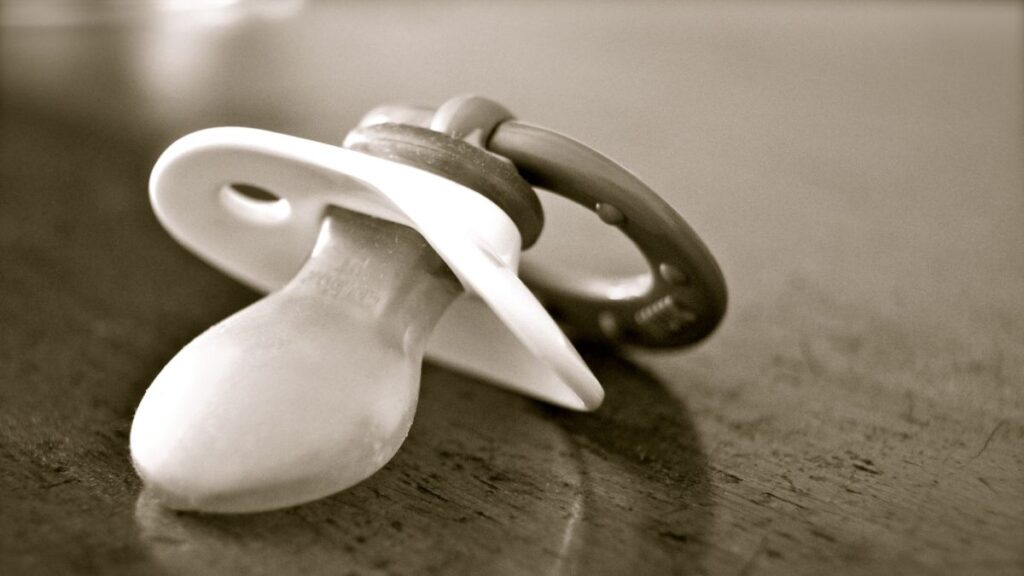
While most parents readily use a pacifier, there are different opinions on whether it is healthy for babies. Following are a few downsides of using pacifiers:
- There is a great chance that your baby may become pacifier-dependent and cry profusely if the pacifier is unavailable or falls out of their mouth.
- Babies might experience trouble breastfeeding and prefer using pacifiers instead.
- There might be an increased risk of middle ear infections after the baby is six months old.
- Pacifiers might be a breeding place for germs and cause illnesses if not regularly sanitized or replaced.
- Long-term use of pacifiers might cause dental issues in babies making the teeth misaligned or crooked.
When to Introduce Pacifiers
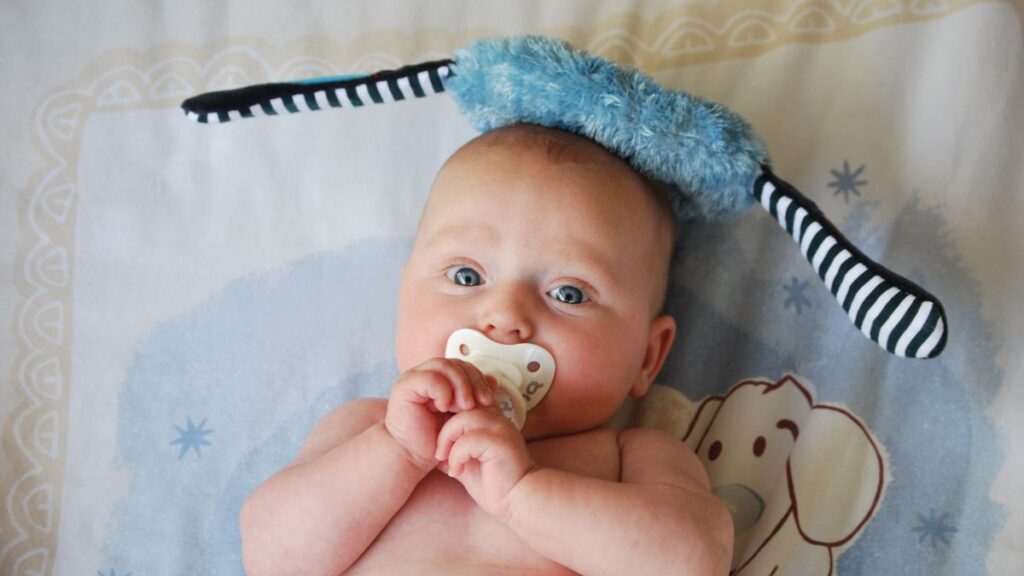
There is no correct answer to the question. According to the American Academy of Pediatrics (AAP), it is recommended to wait until the baby is four weeks to introduce pacifiers to reduce breastfeeding issues. Newborn babies also have a hard time sucking on pacifiers and may exhaust their energy before they are able to breastfeed. By four weeks, the babies usually have a routine and are less likely to have nipple confusion or trouble feeding.
Following are some tips for introducing the pacifier:
- Choose the right size of pacifier according to the age of the baby
- Use one-piece pacifiers to avoid any choking hazards
- Always clean the pacifier before giving it to your baby
- Do not use the pacifier as an alternative for feeding
- Do not pressurize the baby to take the pacifier if they refuse it initially
When to Stop Pacifiers
Again there is no definite answer as every baby is different. However, the American Academy of Pediatric Dentistry (AAPD) recommends weaning your baby from the pacifier by age three. It reduces the risk of dental issues that might arise in the future. Most experts agree that the right age to ditch the pacifier is when the baby is between two to four years of age.
Should I Remove the Pacifier When the Baby is Sleeping?
It is safe to remove the pacifier once the baby is sound asleep. However, some babies might be emotionally dependent on it and may wake up when the pacifier is removed.
As mentioned previously, pacifiers may reduce the risk of SIDS and help babies sleep more peacefully while easing breathing. However, there are a few precautions that need to be taken, such as sanitizing the pacifier regularly and not attaching a string to the pacifier to eliminate the risk of strangulation.
How to Get Rid of Pacifiers?
Once you have decided to get rid of the pacifier for good, specific steps may help you successfully wean your little one.
The following tips may prove to be helpful:
- Try gradual weaning by limiting the time the child uses the pacifier.
- Replace the pacifier with another item the child can use for comfort, such as a stuffed toy or special blanket.
- Provide them something else to chew on temporarily, such as a teether which will help with the sucking reflex and ease the teething process.
- Give positive reinforcements and encouragement for not using the pacifier.
- Try having a ‘grownup’ talk with your child if they are around three years of age or above and explain that pacifiers are for babies.
- Cut a hole in the pacifier and convince your growing child that he or she needs to ditch the pacifier since it’s ‘broken.’
How to Fix Pacifier Teeth?
If you are a new parent looking to introduce a pacifier but want to avoid any dental issues, try choosing an orthodontic one. These orthodontic ones provide better alignment of the jaw, thus reducing the risk of misaligned teeth.
According to Healthline, “many experts say that when a child is weaned off of a pacifier will directly affect how permanent the dental issues may be. For example, issues detected before 24 months of age can often correct themselves within 6 months from when a child is weaned. In that case, no dental interventions may be necessary.”
The first action to be taken if your child has already developed ‘Pacifier Teeth’ is to consult a competent dentist to devise a plan. The earlier you detect the dental problem and try to solve it, the quicker you will see the results. The dentist may suggest using braces or aligners once the child is old enough to correct the teeth.
The Pacifier Guideline
Following are certain giveaway dos and don’ts while using pacifiers for your little ones.
- Do your research on pacifiers and select the one with the least disadvantages.
- Do not use any coating on the pacifier, such as honey or cream.
- Do keep a check on the size and replace them if you plan to use pacifiers for several months.
- Do not leave the pacifier open without a cover.
- Do thoroughly clean the pacifier if it comes in contact with any surfaces.
- Do not share pacifiers between babies.
- Do make sure that the pacifier shield has a hole in it.
- Do not force the pacifier into the baby’s mouth if he or she does not take it.
- Do consult with your pediatrician before introducing and stopping the pacifier.
- How to Raise Awesome Parents: A Guide by the World’s Coolest 5-Year-Old - December 22, 2023
- How to Use Sight Words: Strategies for Mastering Common Words - August 4, 2023
- Understanding Dyslexia: Nurturing the Unique Reading Journey of Dyslexic Readers - July 31, 2023

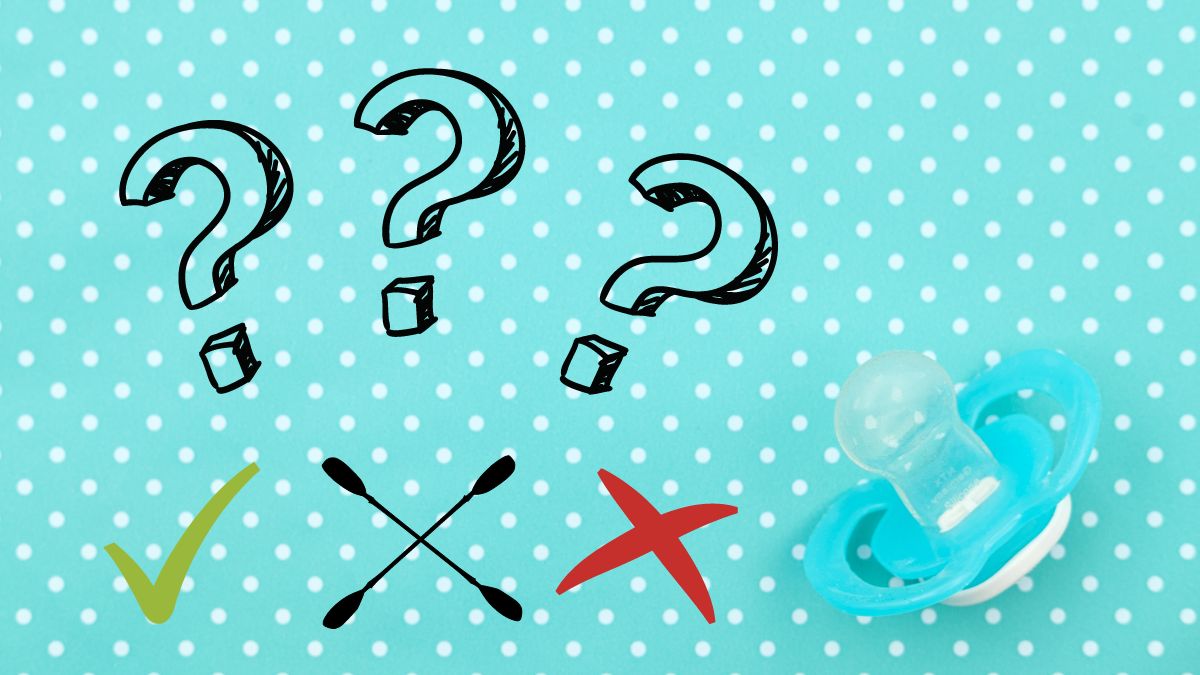

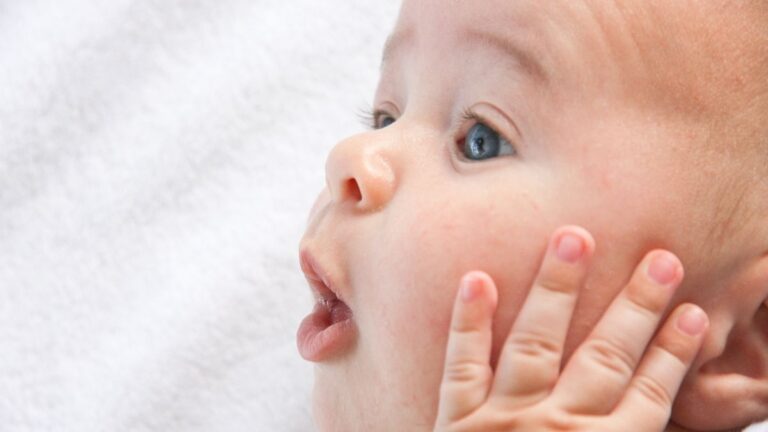
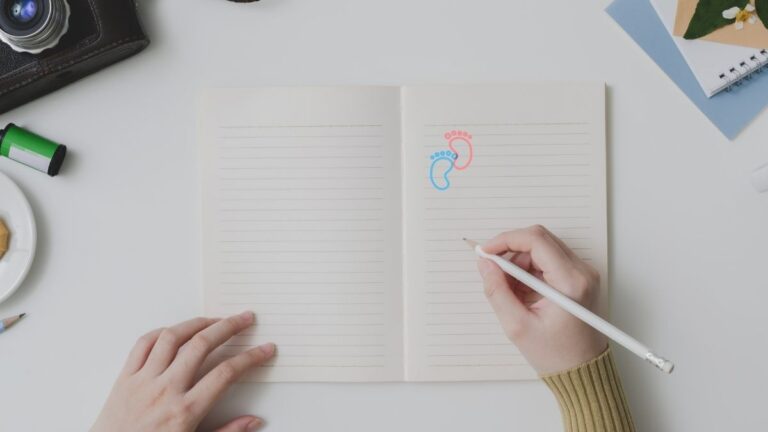
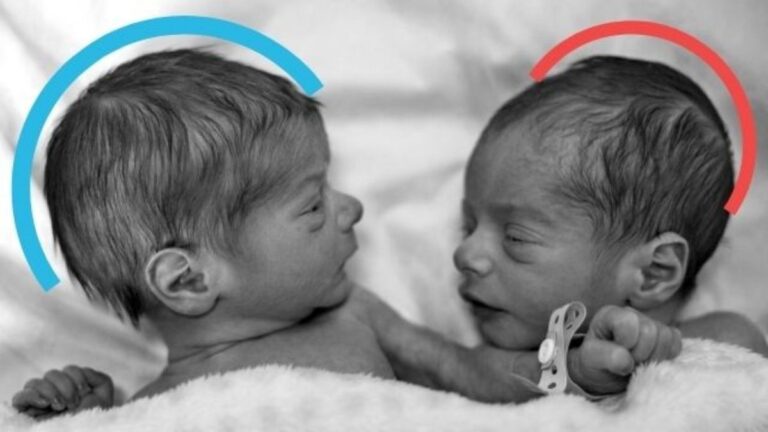

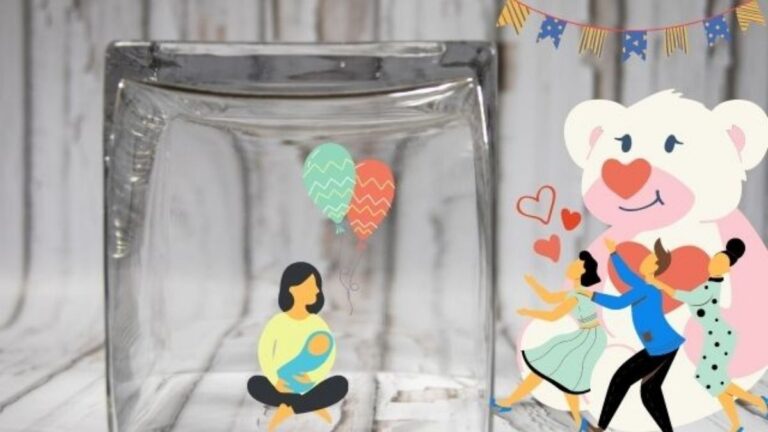
Here is my genius tip for getting rid of the pacifier. Worked like a charm for my two boys. Just fasten the pacifier around the neck of a large bulky stuffed animal, of course in a very safe fashion. Then just wait for them to get tired of lugging it around. They used it a naptime for a few more weeks, but the constant all-day use of it just painlessly disappeared!
I really love this post. Explains the pros and cons of pacifiers. I’m not sure if I got lucky or not but both my kids refused to use a pacifier no matter what type I tried. Very informative. Thanks for sharing
Love this post!